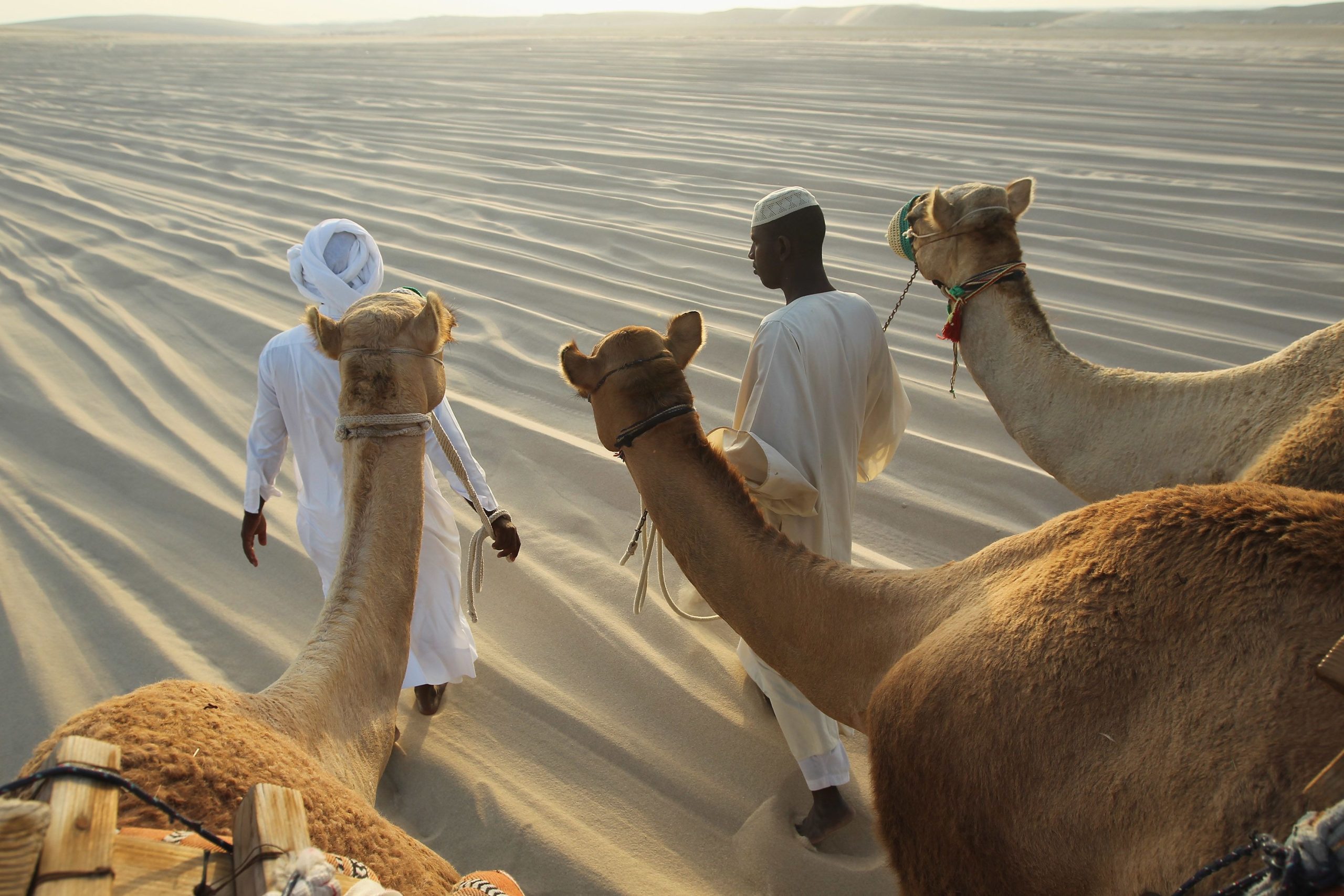Best Camel racing, an ancient tradition that has evolved into a cherished cultural spectacle, offers visitors to Qatar a unique glimpse into the country’s heritage. Known as the “Sport of Sheikhs,” camel racing is deeply rooted in Bedouin culture and has developed into a well-organized and widely popular event, drawing both local spectators and international tourists. Qatar’s modern camel racing is an unforgettable experience that combines history, culture, and modern innovation. This article will take you through the fascinating world of camel racing in Qatar, exploring its origins, the role of technology, race logistics, and the thrill it brings to spectators.
Origins and Historical Significance of Camel Racing
Camel racing has been a part of the Arabian Peninsula’s culture for centuries, serving as both a form of entertainment and a competitive sport among Bedouin tribes. In Qatar, camel racing was traditionally held during special celebrations and gatherings. The sport was historically a way to display the prowess of one’s camels, a prized possession and a symbol of wealth and status. Camels were an essential part of survival in the harsh desert environment, used for transport, milk, and meat.
Over time, camel racing transformed from informal gatherings to an organized and celebrated event. In the 1970s, camel racing began to be recognized as a national sport in Qatar, with dedicated tracks and substantial investments from the government and private sectors to promote and preserve this heritage.
The Unique Characteristics of Racing Camels
Racing camels, known as “thuraya” in Arabic, are bred and trained specifically for speed and endurance. Unlike other camels, which are typically known for their slower, plodding pace, racing camels are slender and agile. Breeding practices have been refined over generations, with camels selected based on their speed, physical attributes, and lineage. The primary breeds used in racing are known for their light weight, long legs, and streamlined bodies, making them ideal for sprinting across the sandy tracks.
In Qatar, racing camels undergo specialized diets and training regimens to build their stamina and agility. Their diet includes a mix of oats, dates, milk, and sometimes honey, which is believed to enhance their energy levels. Training typically begins when the camels are around six months old, with an emphasis on building endurance, obedience, and responsiveness.
The Advent of Robotic Jockeys
In recent years, technology has brought significant changes to camel racing, particularly with the introduction of robotic jockeys. Traditionally, children were used as jockeys in camel racing, but concerns about child welfare led Qatar and other Gulf countries to ban this practice. Instead, robotic jockeys—compact, remote-controlled devices that sit atop the camels—have replaced human jockeys.
These robots, which weigh around 2-3 kilograms, are equipped with whips and speakers, allowing the camel handlers to guide and encourage the camels from the sidelines. The handlers can communicate with the camels using commands transmitted through the speakers, which the camels recognize from their training. The robotic jockeys have also added a new level of excitement and novelty to the sport, attracting even more spectators curious to see this blend of tradition and technology.
Camel Racing Tracks in Qatar
Qatar is home to several world-class camel racing tracks, with Al Shahaniya Camel Racetrack being the most famous. Located just outside of Doha, Al Shahaniya is the heart of camel racing in Qatar and is equipped with state-of-the-art facilities that accommodate both local and international competitions. The racing season in Qatar typically runs from October to April, when the cooler temperatures provide ideal conditions for both the camels and spectators.
Al Shahaniya Camel Racetrack offers grandstand seating for spectators, as well as designated areas for owners and trainers. The track spans several kilometers, with tracks ranging from 4 to 10 kilometers, depending on the age and category of the camels. Modern racing tracks are designed to accommodate fast-paced races, and the tracks are meticulously maintained to ensure the camels’ safety.
The Thrill of Camel Racing Events
Camel racing events in Qatar are lively gatherings, with enthusiastic crowds and a bustling atmosphere. The races, which typically last between 10 to 15 minutes, are fast-paced and thrilling, as camels reach speeds of up to 65 kilometers per hour. The races are structured into different categories based on the camels’ age and breed, allowing participants and spectators to witness a variety of races throughout the event.
On race days, the atmosphere is electrifying, with a mix of locals, expatriates, and tourists coming together to watch. The sound of drums and traditional music fills the air as the camels line up at the starting gates, adding to the excitement. The sport is highly competitive, with substantial prize money and prestige awarded to winning camels and their owners, which heightens the stakes and intensity of each race.
The Economic and Cultural Impact of Camel Racing
Camel racing is not only a cultural sport but also an economic activity that contributes to Qatar’s tourism and economy. The sport has created an entire industry around camel breeding, training, and racing, with many Qatari families heavily invested in their camels. Winning camels are highly prized, often commanding impressive sums in sales and breeding rights.
Additionally, camel racing attracts tourists from around the world who are keen to witness this unique sport. As a result, the government has made efforts to promote camel racing as a part of Qatar’s tourism offering, positioning it as an attraction that offers insight into the nation’s heritage. Organized tours are available for tourists, which include visits to camel training centers, interactions with camels, and witnessing the races themselves, offering visitors an immersive experience into the culture of Qatar.
Experiencing Camel Racing as a Tourist in Qatar
For tourists, witnessing a camel race in Qatar is a memorable experience. Many tour operators, such as Murex Qatar Tours, offer organized trips to the Al Shahaniya Camel Racetrack, where visitors can observe races, meet camel trainers, and learn about the sport’s history. Tour packages often include round-trip transportation, guided tours of the facilities, and opportunities to interact with camels and their handlers.
Visitors to Qatar who are interested in camel racing should plan their trip during the racing season and check for event schedules. While races are free to attend, special events and tournaments, such as the Emir’s Sword Festival, draw larger crowds and offer a more festive atmosphere. For those seeking an authentic cultural experience, camel racing provides a window into Qatari heritage, blending tradition with modern innovation.
Preserving Camel Racing in the Modern Era
Camel racing has adapted over time, embracing technology while maintaining its cultural roots. The introduction of robotic jockeys, modern facilities, and formalized racing structures demonstrate Qatar’s commitment to preserving camel racing as both a cultural symbol and a competitive sport. Despite these modernizations, the essence of camel racing—the bond between the handler and the camel, the skill involved in training, and the thrill of competition—remains unchanged.
Today, camel racing stands as a proud emblem of Qatar’s heritage and serves as a reminder of the nation’s Bedouin roots. By supporting camel racing, Qatar not only preserves its traditions but also shares them with the world, allowing visitors to experience the excitement, beauty, and cultural significance of this ancient sport.
Conclusion
Camel racing in Qatar is more than just a sport; it’s a living tradition that offers a unique insight into the country’s cultural heritage. With the sport’s modernization, including the use of robotic jockeys and world-class racing facilities, Qatar has successfully maintained the spirit of camel racing while adapting it to the contemporary world. For tourists seeking an authentic cultural experience, a visit to a camel racing event offers a thrilling and memorable way to connect with Qatar’s history and traditions. By embracing both tradition and innovation, camel racing continues to captivate audiences, ensuring its legacy endures for generations to come.




